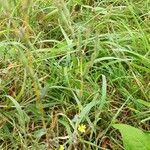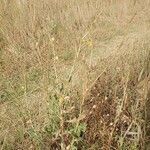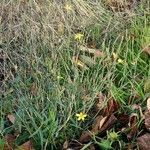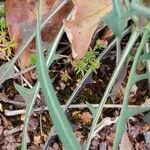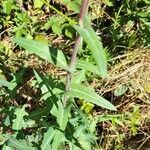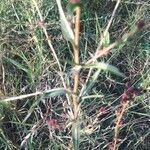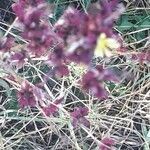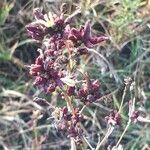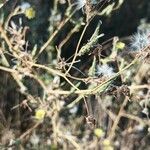Usually glabrous annual or biennial. Stems ascending, not or sparingly branched, glabrous, grooved, 40-60 cm tall. Lvs green, glabrous or sometimes with spines along midrib beneath. Rosette and lower stem lvs green, tapering to base, 3-10 × 1-2 cm, pinnatifid; lobes slender, linear, acute, recurved, entire. Upper lvs sessile, linear, hastate and amplexicaul at base. Infl. spicate. Capitula numerous. Involucre narrowly cylindric, 8-15 mm long; bracts imbricate, erecto-patent at fruiting; outermost bracts lanceolate, acuminate, 1/5-1/6 length of innermost bracts; innermost bracts linear, subacute to acute. Florets c. 11/2× length of involucre; corollas suberect, pale yellow. Achenes pale brown or grey, 7-8-ribbed on each face, obovate, flattened, scabrid distally on ribs; body 3-4 mm long; beak pale, 11/2-2× length of body. Pappus fine, white.
Leafy-stemmed annual or biennial, the stem glabrous, 3–10 dm, more slender than in no. 7 [Lactuca serriola L.]; lvs conspicuously sagittate, linear and entire or with scattered, narrow, sometimes slightly toothed lobes, 6–15 cm, the rachis (or the lf, when entire) 3–8 mm wide, glabrous or with a few prickles on the midrib beneath and sometimes minutely stellate marginally; heads numerous in a long infl; fls 8–16, light yellow, drying blue; invol 12–18 mm in fr; achenes as in no. 7 [Lactuca serriola L.], but avg slightly smaller and narrower, merely scabrous distally, the beak commonly twice as long as the body; 2n=18. A weed in waste places; native of Europe, now found here and there in our range. Aug., Sept.
Annuals (perhaps persisting), 15–70(–100+) cm. Leaves on proximal 1/2–3/4+ of each stem; blades of undivided cauline leaves ± linear to filiform, margins entire or denticulate, midribs usually prickly-setose. Heads in race-miform to spiciform arrays. Involucres 6–9(–13+) mm. Phyl-laries usually erect in fruit. Florets 6–12(–20+); corollas yellow (sometimes abaxially bluish), usually deliquescent. Cypselae: bodies pale brown, ± flattened, elliptic to oblanceolate, 2.5–3.5 mm, beaks ± filiform, (2–)5–6 mm, faces 5–7-nerved; pappi white, 5–6 mm. 2n = 18.
A herb which can take 2 years to complete its life cycle. The stems are erect. It grows 1 m high. The branches point upwards. There are often fine bristles towards the base. The leaves are alternate and simple. It has milky sap. There is a ring of leaves near the base and the lower leaves are broadly sword shaped. They are 3-10 cm long by 1-4.5 cm wide. The leaves are slender and spineless. The upper leaves often clasp the stem. It has a stiff flowering stem up to 1.5 m high.
